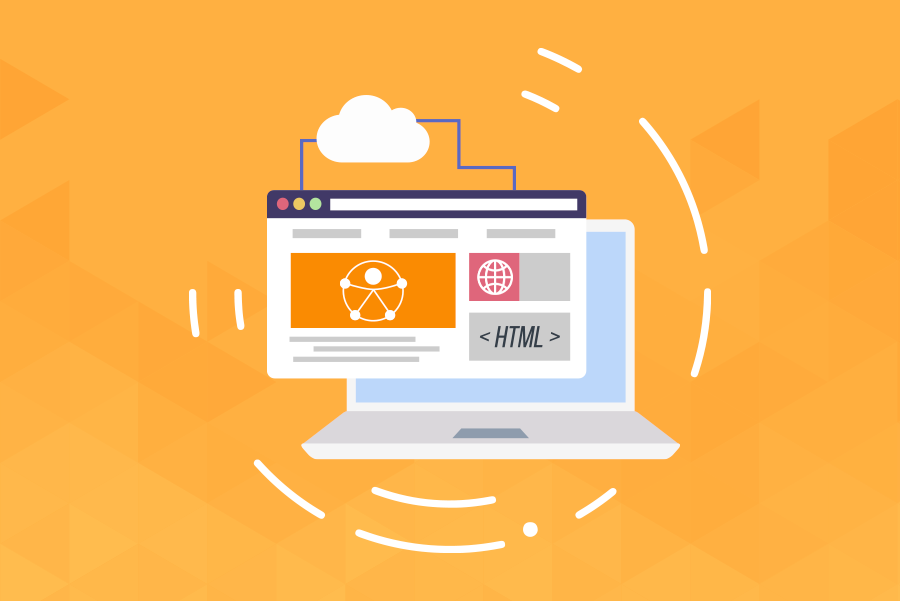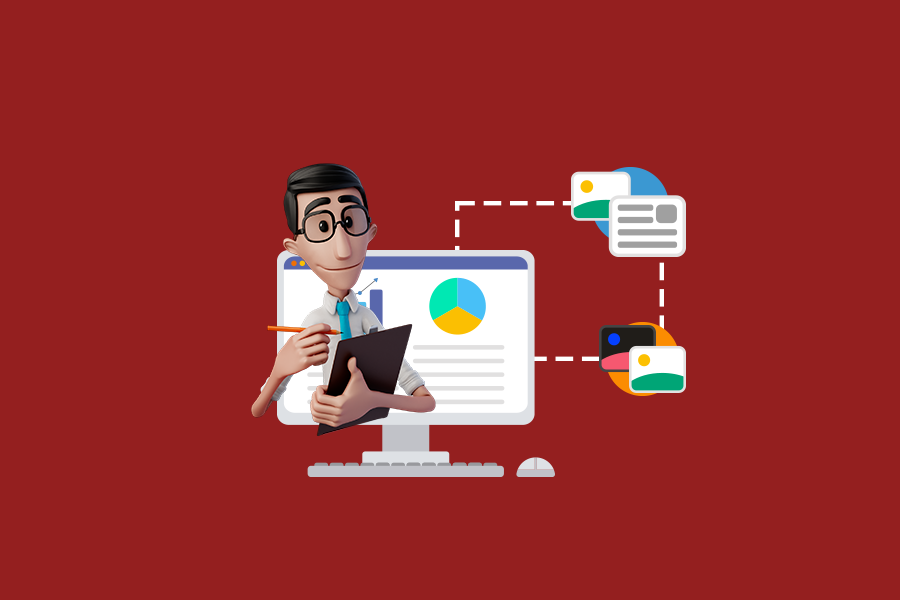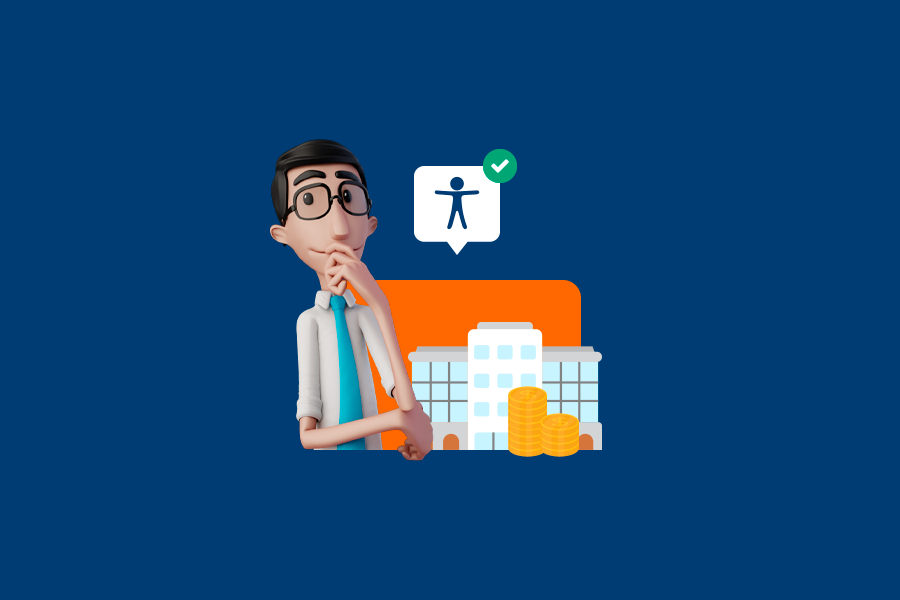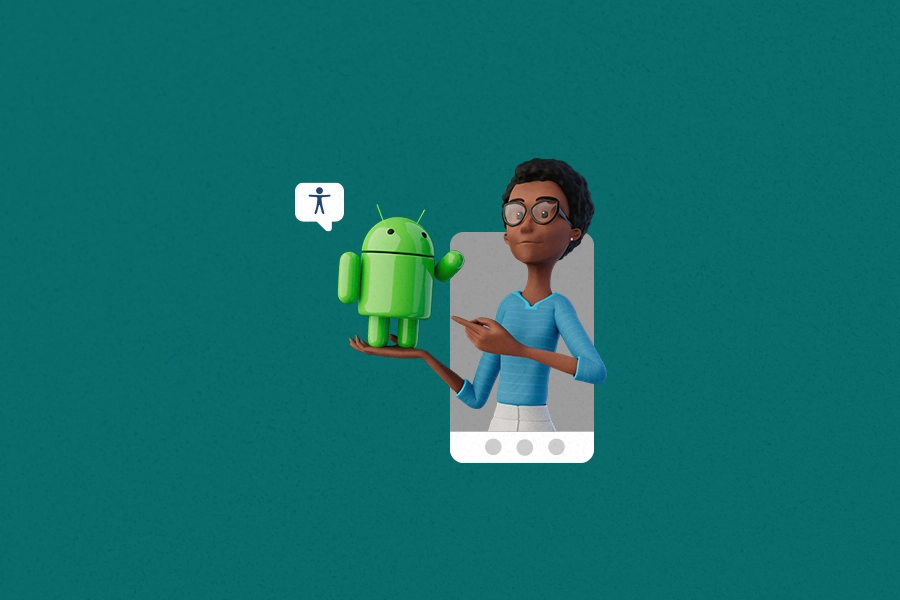
Web Accessibility: What Is It & How To Achieve It

Most people see the internet as a best friend that is always there to help. It brings together those who are far away, answers that doubt that arises at the most inappropriate moment, helps you shop, and even helps you pay that bill without having to stand in line at the bank. Many people in the world are connected to it at this very moment. And that is why talking about web accessibility is so important. Without it, millions of people are unable to perform all these simple, everyday activities.
Just like the content we find on the web, its users are also very diverse. And different people access information in different ways. Having an accessible website is about making sure that they all get the best possible experience while browsing. But how many of websites are accessible?
We will answer this and other common questions about web accessibility, starting with the most basic one:
What is web accessibility?
We know that there is still little information about the subject, and some people end up believing a lot of myths. But web accessibility is about something very simple: breaking barriers in virtual environments. To make a page accessible is to allow different types of people, with or without disabilities, to reach the contents and understand them with autonomy.
“Web accessibility means that people with disabilities can use the Web. More specifically, web accessibility means that people with disabilities can perceive, understand, navigate, interact with, and contribute to the web. And more. It also benefits other people, including older people with changing capabilities due to aging.” (Web Accessibility Primer – W3C Brasil)
A good first step is to put yourself in the other person’s place. Understanding that a blind person does not access content in the same way as a deaf person. The first uses a screen reader and the second may need translation into Sign Language. In other words, people with different types of disabilities use specific resources and assistive technologies when navigating. And websites need to be adapted to all of them.
At first, it may seem complicated. But making your website accessible is not as hard as you think… We explain a bit more about it here below!
Who manages web accessibility on the internet?
The major global organization related to web accessibility is the World Wide Web Consortium (W3C), made up of a staff of technical experts who help coordinate technology development and manage the operations of the Consortium. Through their Web Accessibility Initiative (WIP), they publish the Web Content Accessibility Guidelines, commonly known as WCAG.
Those guidelines are the main responsibles for defining and steering the basic requirements for web accessibility around the world, stating 4 principles to focus on when creating an accessible website.
What are the 4 principles of web accessibility?
As we said, the Web Content Accessibility Guidelines (WCAG) lay out 4 basic principles of web accessibility. Each of them also state accessibility guidelines to achieve web accessibility, but before we get into them, we will explain what the principles are:
Perceivable
The information and interface are presented in a way that can be perceived, understood, or that the user can be made aware of. Keep in mind that the information must be perceivable directly by the user, or by any type of assistive technology.
Operable
Interface and navigation should be operable for all users, without disrupting them in any way. Usually, the most operable websites are very straightforward and do not have any excess functionalities.
Understandable
Information should be presented in a simple and understandable way, including both written and visual content. Also, an important part of an understandable website is a good structure, that is intuitive and that navigation is readily available.
Robust
The content should be robust in a way that can maximize its compatibility with different types of people and assistive technologies. In short, your website’s HTML must be written in a way that assistive technologies can analyze your code easily.
Why is web accessibility important?
People are becoming more and more comfortable doing all kinds of activities in the virtual world. Therefore, aside from having a beautiful and attractive design, websites need to cater to everyone. When a page is not accessible, it is closing the doors to millions of people, going against its purpose – which is to attract more visitors.
In other words, not thinking about accessibility can be the same as leaving money on the table, given that 15% of the world’s population has some kind of disability. It is worth pointing out that nowadays there are already resources that allow you to create websites that are beautiful, functional, and accessible at the same time. Furthermore, accessibility can improve your page ranking in Google, since the search engine algorithm recognizes these practices and sees it as more relevant.
How do you achieve web accessibility?
Are you lost and do not know where to start? Lucky for you, the WCAG presented the 4 principles of web accessibility with some guidelines for each of them, remember? Well, here they are, to help you understand better how to actually build an accessible website:
Perceivable web accessibility guidelines
- Text alternatives for non-text content: they convey the purpose of images or functions to promote an equal user experience to all people, that can be read by screen readers or displayed in braille devices, for example. They can depict images (including icons, buttons and graphics), describe information presented in charts, audio or image files, and also act as labels for navigation controls.
- Captions and other alternatives for multimedia: they can come as text transcripts and captions for audio content, audio descriptions to describe important details in videos for people who cannot see, or Sign Language interpretation of audio-visual content.
- Content can be present in different ways: the content structure (with headings, lists, tables and other elements) must be marked-up properly and the sequence of information is independent of how it is being presented. This way, browsers and assistive technologies can provide settings to better adapt the information presentation based on the user’s needs.
- Content is easier to see and hear: this requirement helps set apart the foreground from the background, to make important information more distinguishable. Therefore, color should not be used as the only way of conveying information, users must be able to pause or adjust the volume of audio being played on the website, and no information must be lost when text is resized or has its spacing changed, just to give a few examples.
Operable web accessibility guidelines
- Functionality is available from a keyboard: the user must be able to access all of a website’s functionalities from the keyboard, including form controls, input and other user interface components.
- Users have enough time to read and use the content: users need different amounts of time to read or use content or complete tasks online. This is the reason why websites must provide, for example, mechanisms for re-authentication when a session expires without losing data and pause, stop or hide moving, blinking or scrolling content.
- Content does not cause seizures and physical reactions: content that is animated, moves or flashes at certain rates or patterns should be avoided. Or, at least, they should provide mechanisms to switch off animations and include warnings and alternatives for content use.
- Users can easily navigate, find content, and determine where they are: the content must be well organized to help users navigate effectively, with a clear structure, evident links, ways to bypass repeated blocks of content and alternatives for search mechanisms within the website, for example.
- Users can use different input modalities beyond keyboard: this helps your website to be adapted for a wide range of abilities and multiple different devices, having input modalities such as touch activation, voice recognition and gestures.
Understandable web accessibility guidelines
- Text is readable and understandable: by identifying the primary language of your content, other potential languages for different parts of the website, providing definitions for unusual terms and using the simplest language possible, your content is understandable to the broadest possible audience, and also to assistive technologies.
- Content appears and operates in predictable ways: this way, users quickly learn the functionality and navigation mechanisms provided on a website, and how to operate accordingly. Your content is predictable when you have navigation mechanisms that are repeated multiple times, use interface components that are repeated with the same labels, and significant changes on a web page do not happen without the consent of the user.
- Users are helped to avoid and correct mistakes: forms and similar interactions can be confusing or difficult for many users. You can help them with this by having descriptive instructions, context-sensitive help for more complex interactions and opportunities to correct submissions.
Robust web accessibility guidelines
- Content is compatible with current and future user tools: the goal of this requirement is to be compatible with different browsers and assistive technologies, including non-standard (scripted) buttons, input fields and other controls. You can achieve this by ensuring valid markups and providing names, roles and values for non-standard components.
What is an example of web accessibility?
We have put together some very simple and practical tips for you to warm up your engines and make your site more accessible little by little. They are small details, but they make all the difference for those who need them! Here are some tips:
- Provide alternative descriptions for images, so that screen readers can identify and describe them for blind users.
- Don’t just use colors to highlight information. This will help people with color blindness, for example, who cannot differentiate between items highlighted by color alone.
- Simplify your text. By doing this, you make it easier for people with dyslexia to read.
- Create larger click areas on buttons, this will help users who lack click accuracy to access specific content.
Web accessibility tools
There are countless accessibility tools available for users, companies and website designers nowadays. Here we will mention some of the most used ones, so you can understand how they work and how to integrate them in your own website. If you want to go the extra mile, you can check out the Web Accessibility Evaluation Tools List that the W3C has put together, with over 160 examples.
- Screen reader software: they can read the content presented on a website, using synthesized speech, being mostly used by blind or people with visual impairments.
- Braille terminals: they consist of a refreshable braille display, which translates text online to braille characters, also mostly used by people who are blind or have some kind of visual disability.
- Screen magnification software: they are responsible for enlarging the content on screens, mostly used by visually impaired users.
- Speech recognition software: this tool is able to understand spoken commands, and even transform dictation into written text. They are mostly used by people with mobility problems or physical disabilities.
- Keyboard overlays: mainly used by those with motor disabilities, they aid people when typing or navigating the web.
- Sign Language translations: focused on the deaf community, they are essential for those who mostly communicate in ASL (American Sign Language) and have difficulties comprehending the written and audio content in websites.
Web accessibility FAQ
To help make your life easier, we gathered here the most Frequently Asked Questions regarding web accessibility. This way, you can clarify all of your remaining doubts and start planning your next actions towards a more accessible website!
Who benefits from web accessibility?
Web accessibility is beneficial to all kinds of people, not only those with disabilities, despite what you may think. However, it focuses on making the digital experience easier for the ones with disabilities, such as people with blindness, low vision, learning disabilities, cognitive disabilities, deafness, hearing loss, speech disabilities, physical disabilities, and so on.
Aside from them, by making your website accessible you are also aiding people with temporary disabilities. For example, someone who broke their arm or who had an eye surgery and cannot see properly. Also, you are helping to make life more practical and convenient for everyone that simply prefers to use an accessibility resource in a particular moment. For instance, a person in public transportation that does not have headphones and cannot listen to videos at the moment, so they watch it with subtitles.
Is web accessibility a legal requirement?
Well, not exactly, but do not worry, we will explain to you how it all works. For starters, if you run a government website, you must abide by Section 508 of the Rehabilitation Act guidelines. It “requires federal agencies to develop, procure, maintain and use information and communications technology (ICT) that is accessible to people with disabilities – regardless of whether or not they work for the federal government”.
Now, even if you run a non governmental website, you still need to pay attention to web accessibility. Even though there aren’t any enforceable laws related to website accessibility, the Department of Justice (DOJ) has taken the position that Title III of the Americans with Disabilities Act (ADA) applies to all public-facing websites used by companies that otherwise qualify as places of public accommodation. This means that websites of businesses with physical stores are considered heavily-integrated with their store locations. Therefore, these websites are expected to meet accessibility standards.
How do I know if my website is ADA compliant?
The ADA itself does not provide any guidelines for web accessibility, however the WCAG 2.2 Guidelines is a pretty good guide to follow if your goal is to become ADA compliant. A good tip is to learn and apply the guidelines, or be sure to hire an accessibility specialist developer to ensure your website is accessible.
Can I be sued if my website is not accessible?
Yes, you can! If your website is not ADA compliant you are at risk of being sued. Small businesses are big targets for those fines, as most of them do not reach the minimum level of accessibility required. Big companies are also being sued. For instance, in 2021 over 11.000 lawsuits were filed in the United States in violation of the ADA.
Web accessibility is a big deal, as you have probably noticed. Even if you are not a big expert on the matter, taking your first step towards creating a more accessible website is the most important thing right now. If you are still not sure how to start, and are looking for more information about it, be sure to check out our blog!


